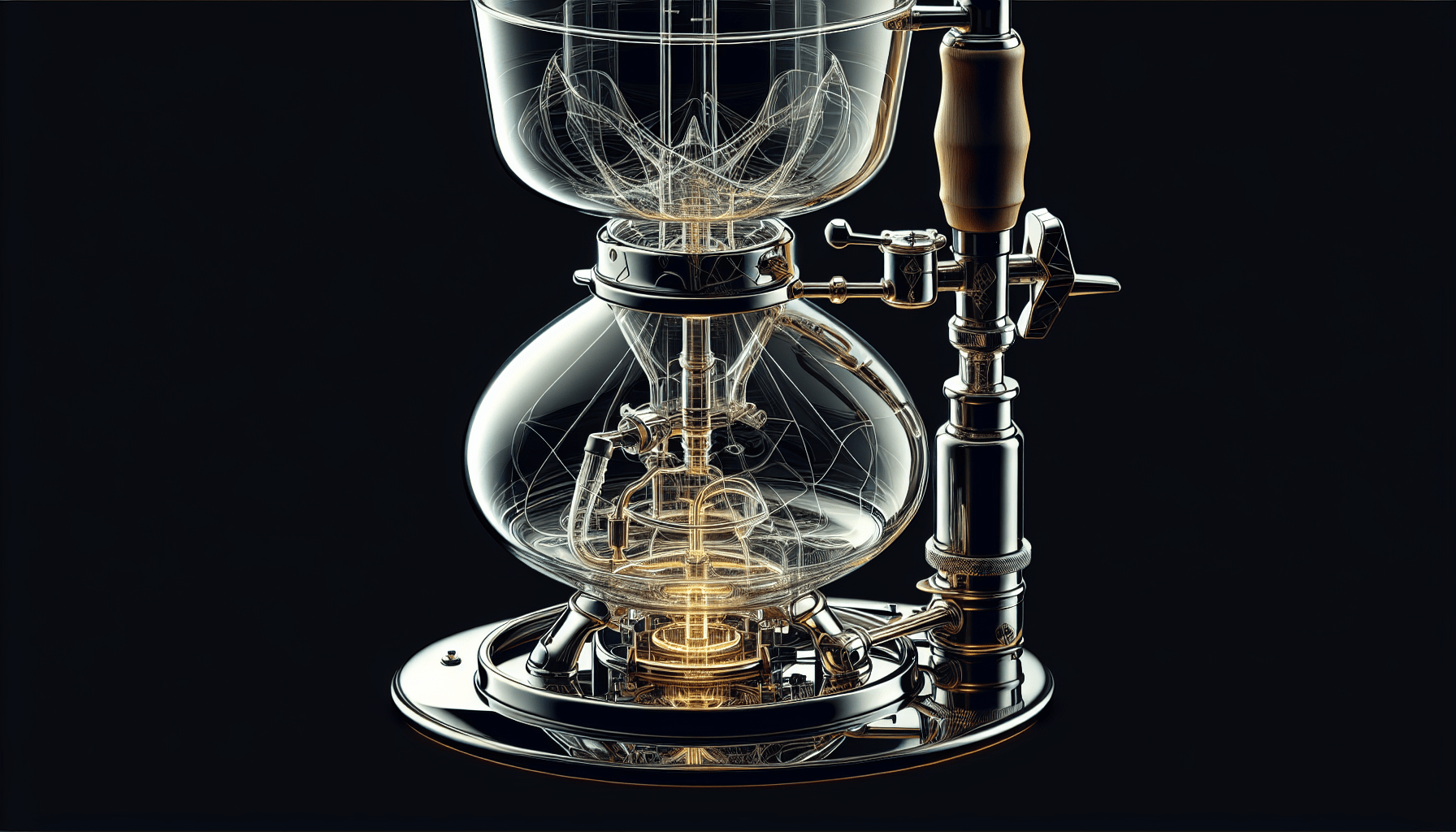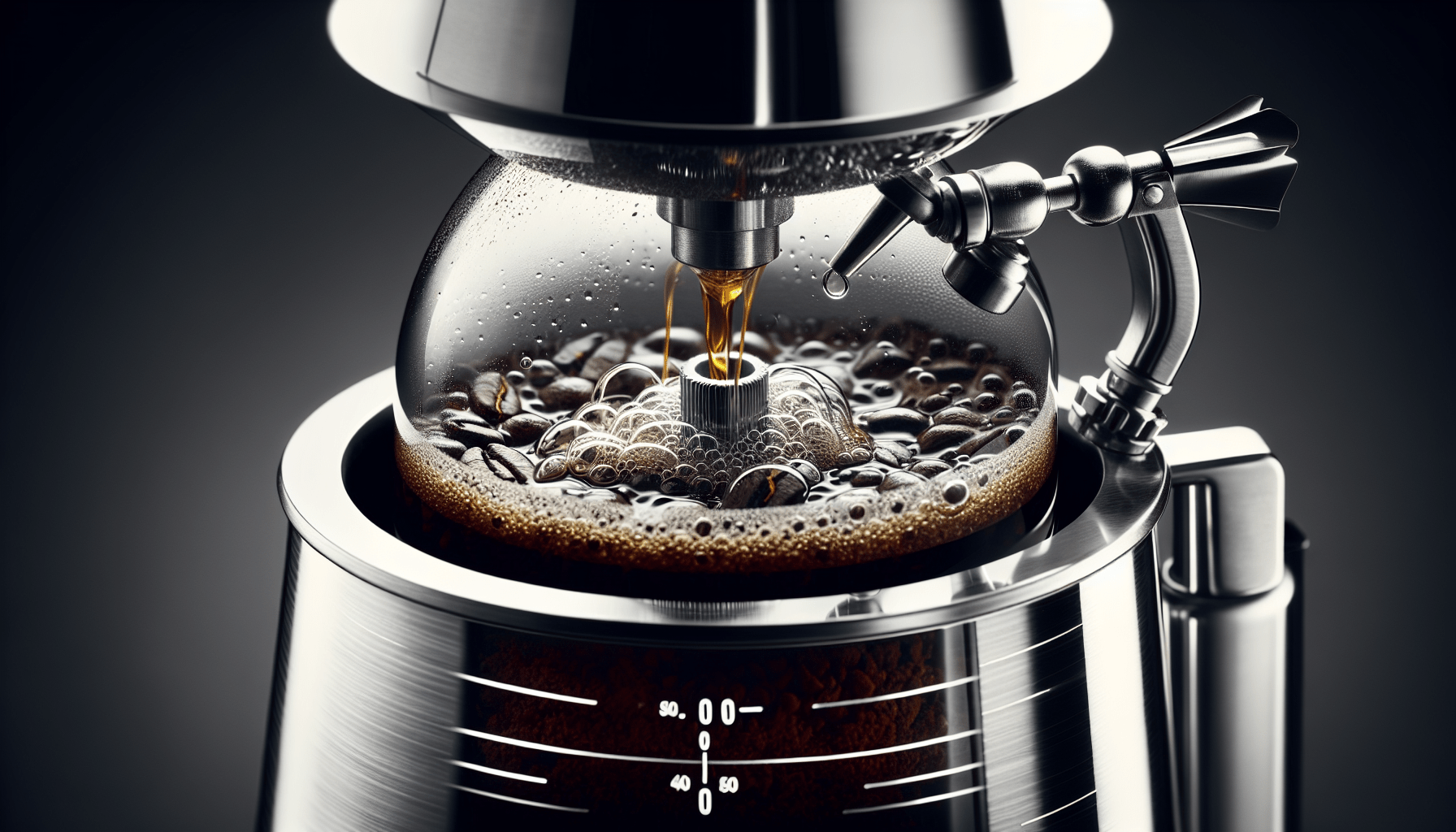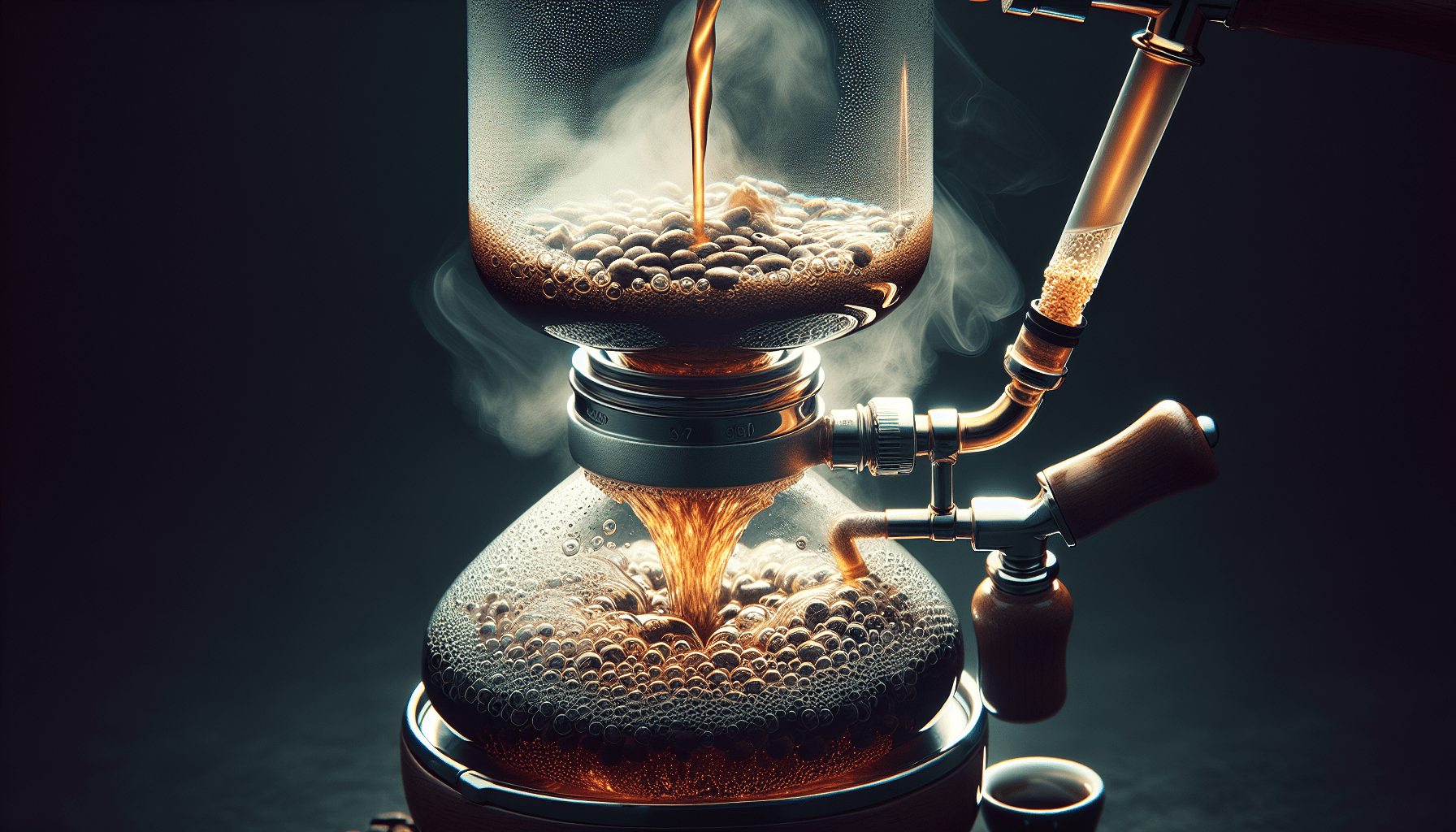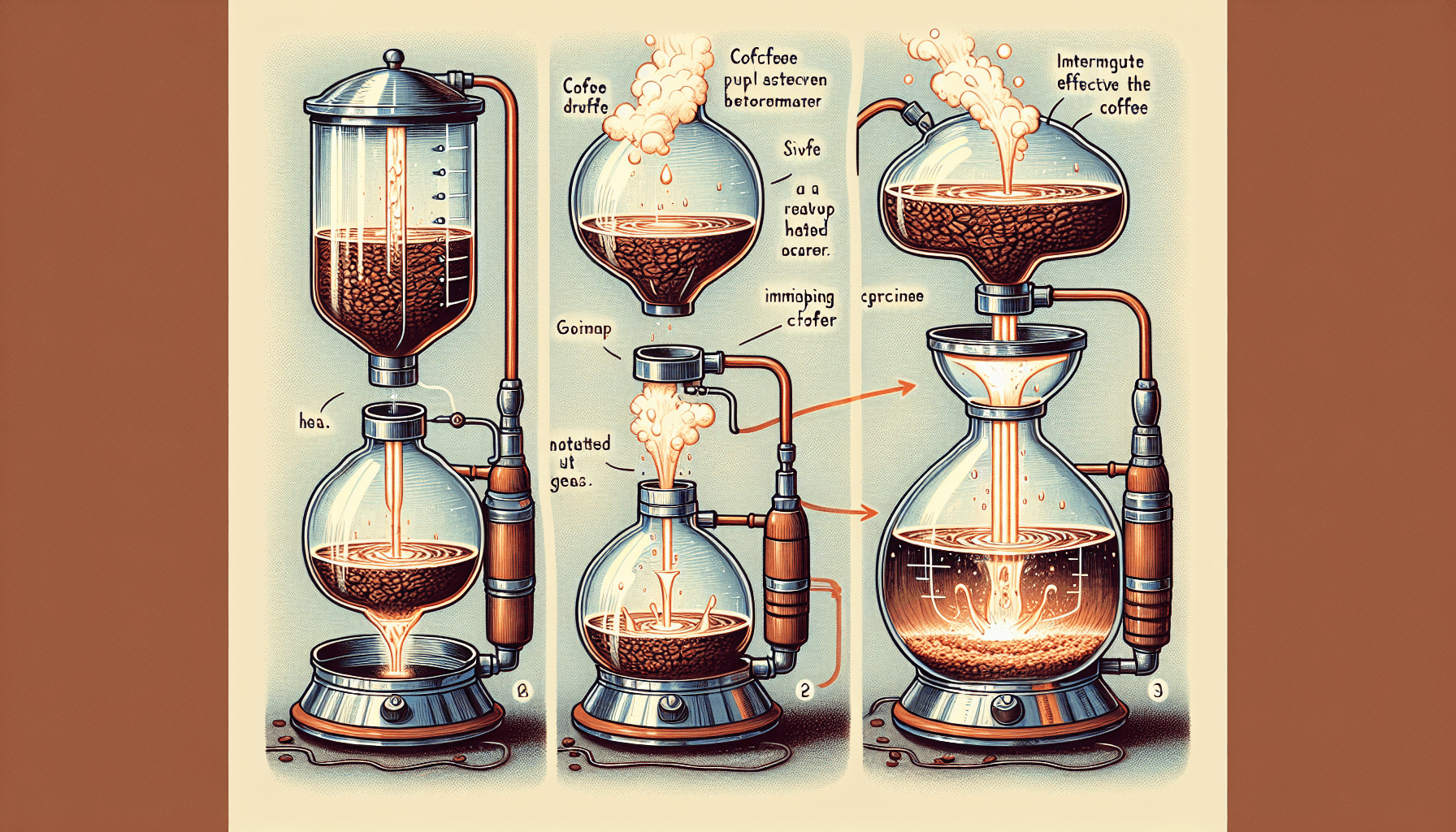Have you ever wondered who invented the siphon coffee maker? This intriguing device, also known as a vacuum coffee maker, has a long and fascinating history. With its unique brewing process that combines science and art, the siphon coffee maker has become a favorite among coffee enthusiasts. From its origins in the 19th century to its modern resurgence, let’s uncover the innovator behind this remarkable invention.
History of the Siphon Coffee Maker
Early Origins
The history of the siphon coffee maker dates back to the early 19th century. While it is difficult to pinpoint an exact origin, the concept of a vacuum coffee maker can be traced back to France. The early versions of this brewing method consisted of two glass chambers connected by a tube. Water was heated in the lower chamber, creating pressure that forced the water to rise to the upper chamber containing the coffee grounds. Once the heat was removed, a vacuum effect drew the brewed coffee back into the lower chamber. This revolutionary method of brewing brought about a unique flavor and texture that captured the attention of coffee enthusiasts.
The First Patent
The first official patent for the siphon coffee maker was granted in 1830 in France. It was awarded to a Scottish engineer named Robert Napier, who recognized the potential of this innovative brewing method. Napier’s design featured a balance mechanism that allowed for precise control over the brewing process. This patent marked the beginning of the widespread adoption and development of the siphon coffee maker.
The First Patent Holder
Robert Napier
Robert Napier was a renowned engineer and an early pioneer in the field of vacuum brewing. His invention of the siphon coffee maker revolutionized the way coffee was brewed and opened up new possibilities for coffee connoisseurs. Napier’s technical expertise and innovative mindset played a crucial role in bringing the siphon coffee maker to life.
Appearance in Commerce
Once Napier’s patent was granted, the siphon coffee maker started appearing in coffee shops and households throughout Europe. Its unique brewing process and the rich, aromatic coffee it produced quickly gained popularity among coffee lovers. With its elegant design and efficient functionality, the siphon coffee maker became a symbol of sophistication and luxury. Its presence in coffee shops created an ambiance of a refined coffee-drinking experience.
Scarcity and Modern Reproductions
As the demand for siphon coffee makers grew, scarcity became an issue due to the complexity and intricacy of the design. However, with advancements in manufacturing processes, modern reproductions of the siphon coffee maker have become more accessible. Coffee enthusiasts can now find a variety of siphon coffee makers in different materials and styles, making it easier to recreate the brewing experience of the past.
Contributions of Madame Vassieux
Introduction of Glass
Madame Vassieux, a Frenchwoman, made significant contributions to the siphon coffee maker’s design and functionality. In the mid-19th century, she introduced the use of glass as a material for the brewing chamber. This innovation allowed coffee lovers to witness the captivating brewing process firsthand, adding a visual element to the coffee-making experience. The transparency of glass enhanced the aesthetic appeal of the siphon coffee maker and further heightened its popularity.
Improved Design and Functionality
Madame Vassieux also made improvements to the overall design and functionality of the siphon coffee maker. She introduced a cloth filter, which replaced the metal filter previously used. This cloth filter allowed for a cleaner cup of coffee, removing any sediment or grounds that may have made their way into the brew. Madame Vassieux’s contributions played a significant role in further refining the siphon coffee maker’s brewing process and elevating the coffee it produced.
Further Innovations and Popularity
Creation of Different Variations
Over the years, the siphon coffee maker underwent further innovations and variations. Different sizes, materials, and shapes were introduced to cater to various preferences and brewing needs. Some siphon coffee makers featured ornate designs and intricate engravings, adding a touch of elegance to the brewing ritual. The flexibility of the siphon coffee maker’s design allowed for personalization and customization, further fueling its popularity among coffee enthusiasts.
Popularity in Japan
In the 20th century, the siphon coffee maker gained significant popularity in Japan. The Japanese coffee culture embraced the precision and elegance of the brewing method, incorporating it into traditional tea ceremonies. The meticulous attention to detail and the graceful movements involved in brewing with a siphon coffee maker perfectly aligned with Japan’s reverence for craftsmanship and artistry. Today, siphon coffee makers are a common sight in Japanese specialty coffee shops and have become an integral part of the country’s coffee culture.
Techniques and Brewing Process
The Siphoning Process
The siphon coffee maker’s brewing process is a mesmerizing display of science and precision. To begin, water is heated in the bottom chamber until it reaches a specific temperature. As the water heats up, pressure builds, forcing it to rise through the tube and into the upper chamber. Once the heat source is removed, a vacuum effect is created, pulling the brewed coffee back down into the lower chamber. This delicate balance of heat and pressure creates a gentle extraction that accentuates the coffee’s unique flavors and aromas.
Balance and Control
One of the key advantages of using a siphon coffee maker is the ability to have precise control over the brewing parameters. From the temperature of the water to the brewing time, every aspect can be carefully adjusted to achieve the desired flavor profile. The siphon coffee maker allows for a balance between extraction and clarity, resulting in a clean and nuanced cup of coffee. The fine-tuning of these variables allows coffee enthusiasts to experiment and explore different brewing techniques, enhancing their coffee experience.
Flavor Profile
The siphon coffee maker’s brewing process produces a coffee with a distinct flavor profile. The vacuum effect created during brewing helps extract the delicate flavors from the coffee grounds while minimizing bitterness. The resulting cup of coffee is often described as clean, bright, and full-bodied, with a rich aroma. The siphon coffee maker’s ability to showcase the coffee’s nuanced flavors and delicate notes has made it a favorite among coffee connoisseurs.
Siphon Coffee Today
Third Wave Coffee Movement
In recent years, the siphon coffee maker has experienced a resurgence in popularity due to the third wave coffee movement. This movement emphasizes the importance of quality and craftsmanship in coffee production and consumption. Coffee enthusiasts and specialty coffee shops have embraced the siphon coffee maker as a symbol of the meticulous approach to coffee brewing. Its unique brewing process and attention to detail perfectly align with the principles of the third wave coffee movement.
Specialty Coffee Shops
Specialty coffee shops around the world have recognized the value of the siphon coffee maker in providing a unique and memorable coffee experience. With its theatrical brewing process and striking visual appeal, the siphon coffee maker has become a centerpiece in many specialty coffee establishments. Baristas skillfully operate the delicate mechanisms, engaging customers in the brewing process and creating a sense of excitement and anticipation.
Home Brewing Kits
As the love for specialty coffee continues to grow, more coffee enthusiasts are exploring the world of home brewing. Siphon coffee makers are now available in home brewing kits, allowing coffee lovers to recreate the captivating brewing process in the comfort of their own homes. These kits typically include all the necessary components, such as a heat source, brewing chambers, and filters, making it easier for beginners to embark on their siphon brewing journey.
Siphon Brewing Tips
Grind Size and Water Ratio
Achieving the perfect cup of siphon-brewed coffee relies on finding the right balance between the grind size of the coffee and the water ratio. Generally, a medium-fine grind is recommended for siphon coffee makers. This allows for optimal extraction without clogging the filter. It is also important to maintain a consistent water-to-coffee ratio to ensure a balanced and flavorful brew.
Care and Maintenance
Proper care and maintenance are essential to keep your siphon coffee maker in optimal condition. After each use, thoroughly clean all components with warm water and mild detergent, ensuring all coffee residues are removed. Regular deep cleaning and descaling are also recommended to prevent any buildup that could affect the brewing process. Additionally, handle the delicate glass components with care to avoid any cracks or breakages.
Experimenting with Variables
One of the joys of siphon brewing is the ability to experiment and adjust various variables to personalize your coffee experience. Take the opportunity to explore different coffee beans, grind sizes, water temperatures, and brew times. The beauty of the siphon coffee maker lies in its versatility and adaptability, allowing you to discover your preferred brewing technique and achieve the flavors that suit your palate.
Advantages and Disadvantages
Advantages of Siphon Brewing
Siphon brewing offers several advantages that make it a desirable method for coffee enthusiasts. Firstly, the vacuum brewing process creates a smooth and clean cup of coffee, minimizing bitterness and maximizing flavor. Secondly, the method allows for precise control over variables such as water temperature and brew time, resulting in a highly customizable brewing experience. Lastly, the visual appeal and theatricality of the siphon coffee maker add a touch of excitement and elegance to the coffee-making ritual.
Disadvantages of Siphon Brewing
While siphon brewing has many advantages, it also has a few drawbacks to consider. First and foremost, the siphon coffee maker’s intricate design requires careful handling and maintenance, making it more prone to breakage or damage compared to simpler brewing methods. Additionally, the brewing process can be time-consuming and more involved, requiring attention and patience. Lastly, the initial cost of a high-quality siphon coffee maker may be higher compared to other brewing methods, although the investment can be worthwhile for serious coffee enthusiasts.
Siphon vs. Alternative Brewing Methods
French Press
Compared to the French press, the siphon coffee maker provides a cleaner cup of coffee with a more refined flavor profile. The French press often leaves sediment and oils in the brew, resulting in a richer and more robust coffee. However, the siphon coffee maker’s unique vacuum brewing process extracts the coffee’s delicate flavors without the added sediment, offering a smoother and more nuanced cup.
Pour Over
Pour-over brewing shares some similarities with siphon brewing, as both methods focus on controlling variables to achieve desired flavors. However, pour-over brewing relies on gravity to extract the coffee, while the siphon coffee maker utilizes a vacuum effect. The siphon coffee maker offers more visual appeal and theatricality, while pour-over brewing allows for more hands-on control over the brewing process.
Espresso
Siphon brewing and espresso brewing are vastly different methods that cater to different preferences. Espresso brewing produces concentrated and intense shots of coffee, while siphon brewing provides a more delicate and nuanced cup. The equipment and techniques involved in espresso brewing are also significantly different, with espresso machines requiring high pressure and precise temperature control. Both methods offer unique flavor profiles, and choosing between them ultimately depends on individual taste preferences.
Conclusion
The fascinating history of the siphon coffee maker, from its early origins to its modern-day popularity, showcases the enduring appeal of this unique brewing method. With its elegant design, precise control over brewing parameters, and captivating visual appeal, the siphon coffee maker has captured the hearts of coffee enthusiasts around the world. Whether enjoyed in specialty coffee shops or brewed at home with care and attention, siphon coffee continues to provide a distinct and memorable coffee experience. So go ahead, embrace the rich history of the siphon coffee maker, and immerse yourself in the artistry of brewing a perfect cup of coffee.




